The Input Shaper functionality on the Prusa CORE One, and on the Original Prusa MK4/S, MK3.9/S can be calibrated using an optional accelerometer.
The accelerometer assembly consists of a small PCB enclosed in a printed cover, which connects to the printer. Please note that using the accelerometer requires partial disassembly of the printer.
The input shaper is pre-calibrated from the factory, so this calibration is usually unnecessary on a stock printer. However, if you've made any modifications to the printer hardware, it may be beneficial to recalibrate the settings using the accelerometer.
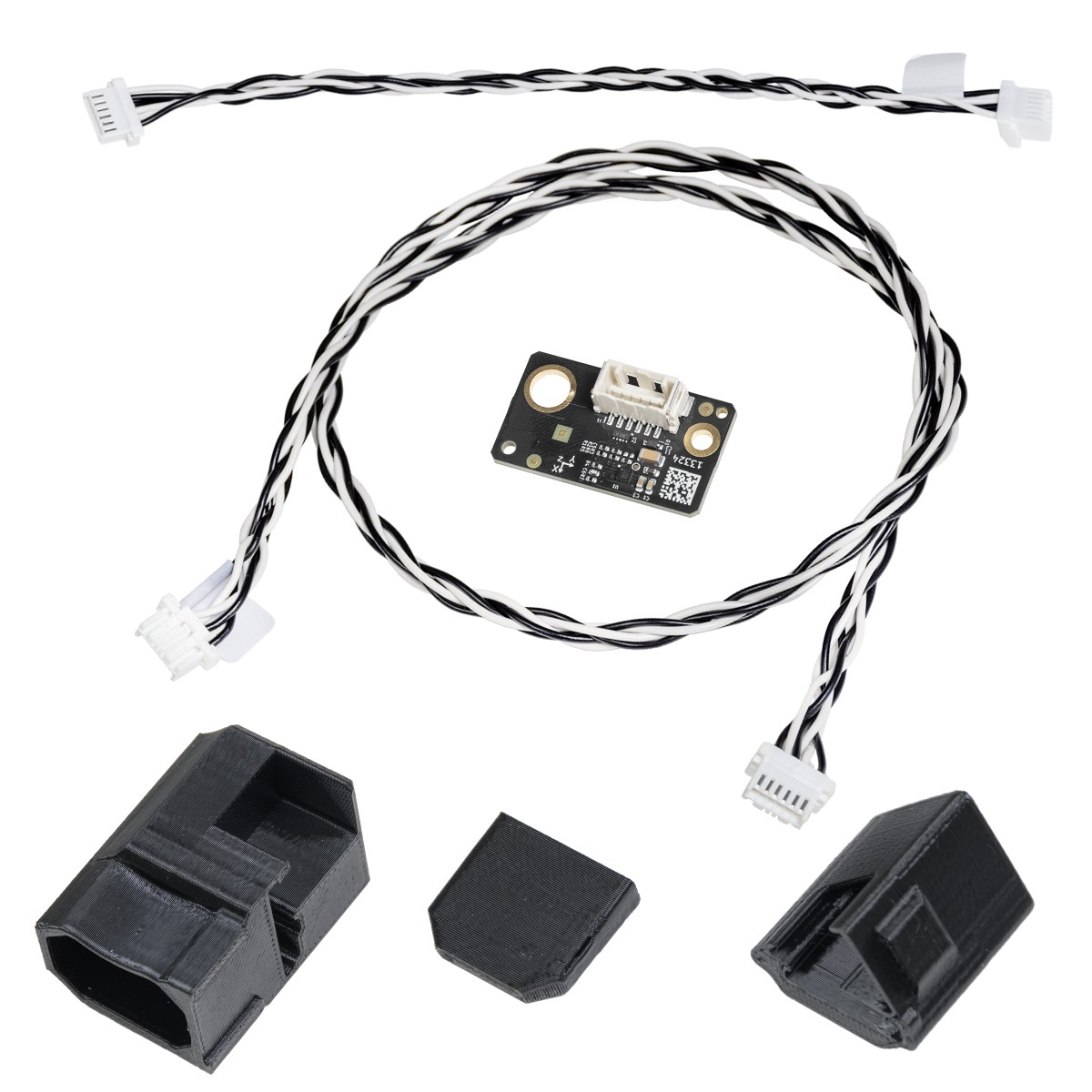
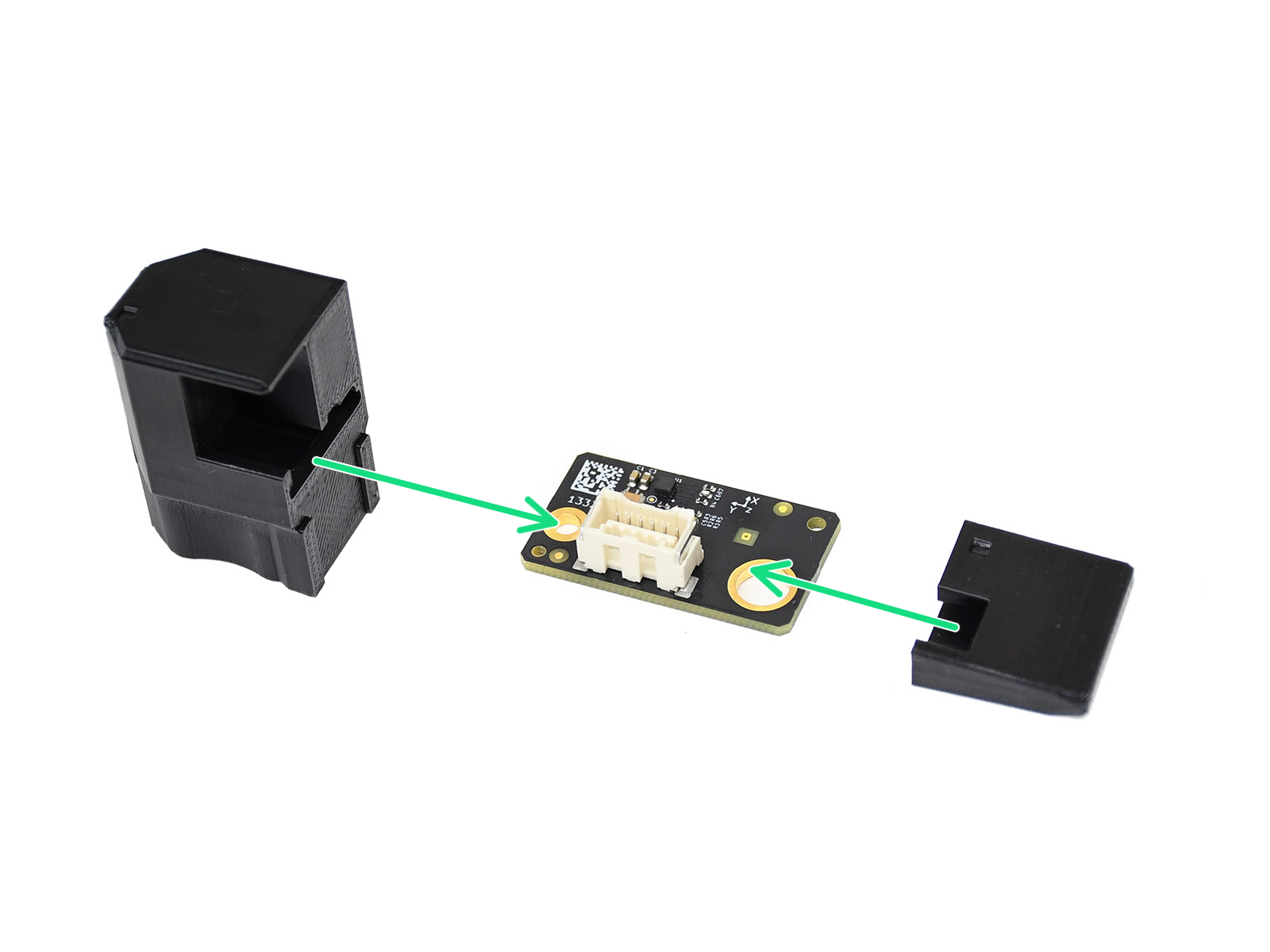 | 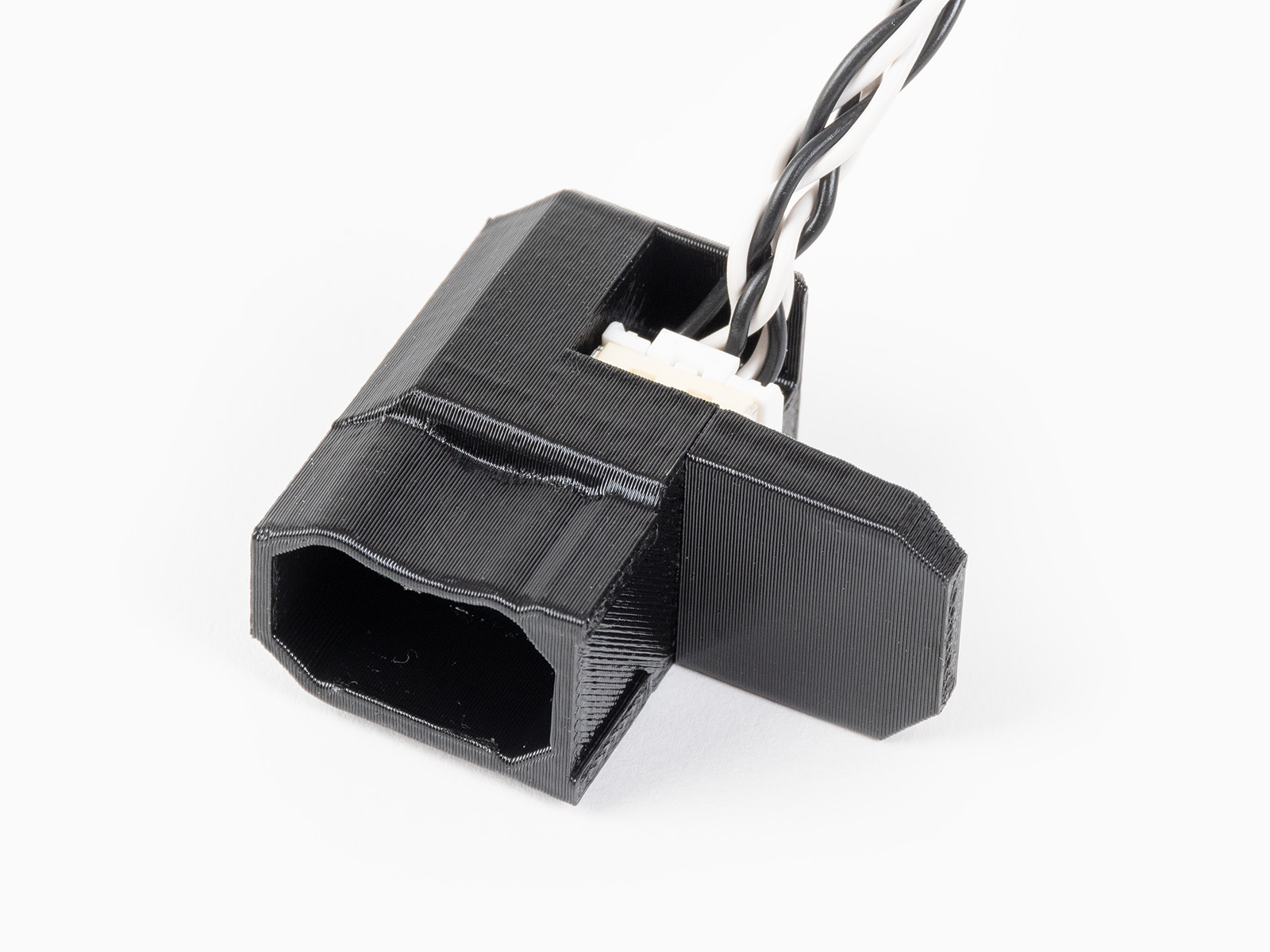 |
Prusa CORE One
Temporarily remove the Wi-Fi board cover, by loosening its M3x12 screw.
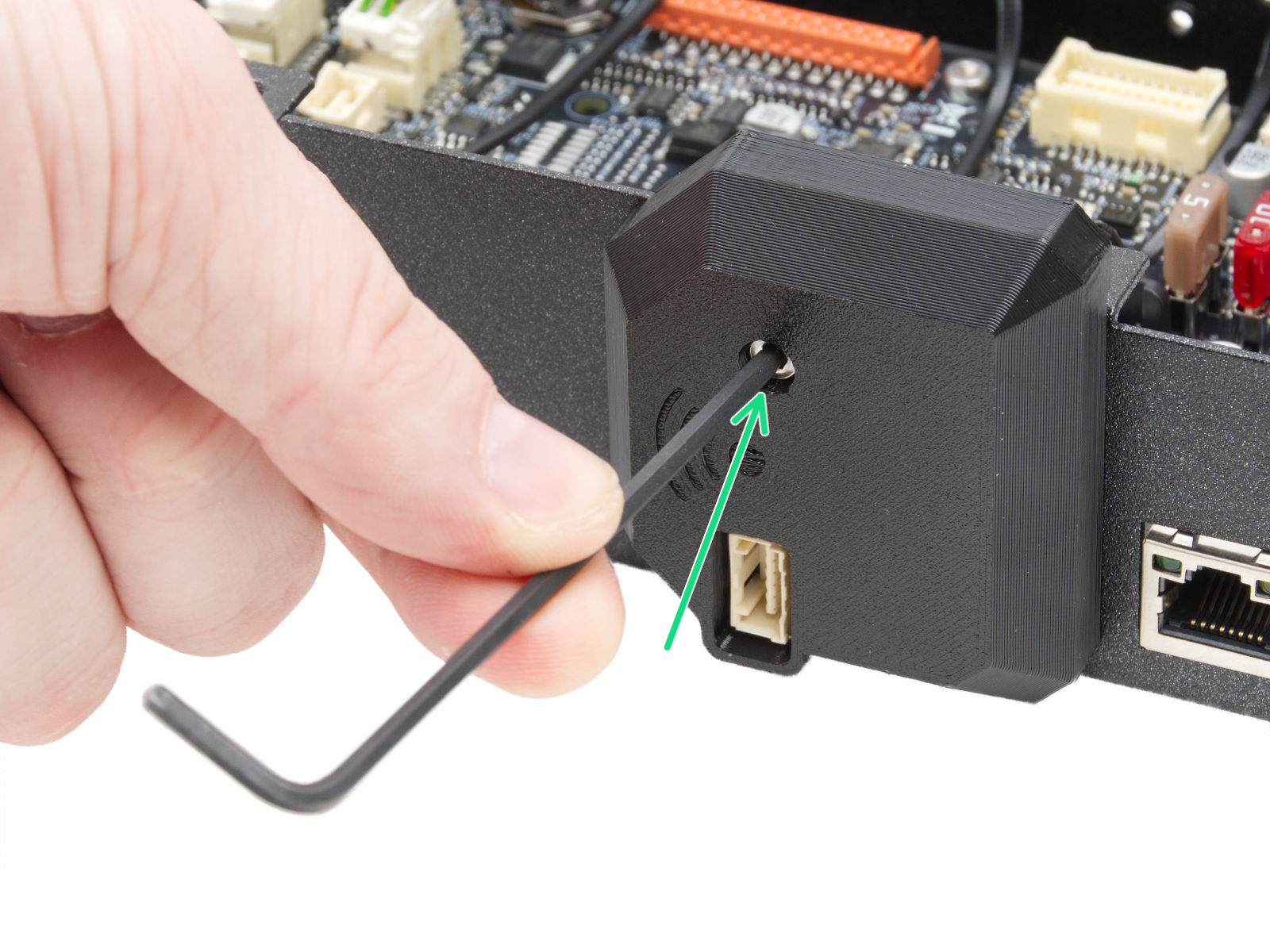
Connect the jumper cable between the xBuddy connector and the Wi-Fi module connector.
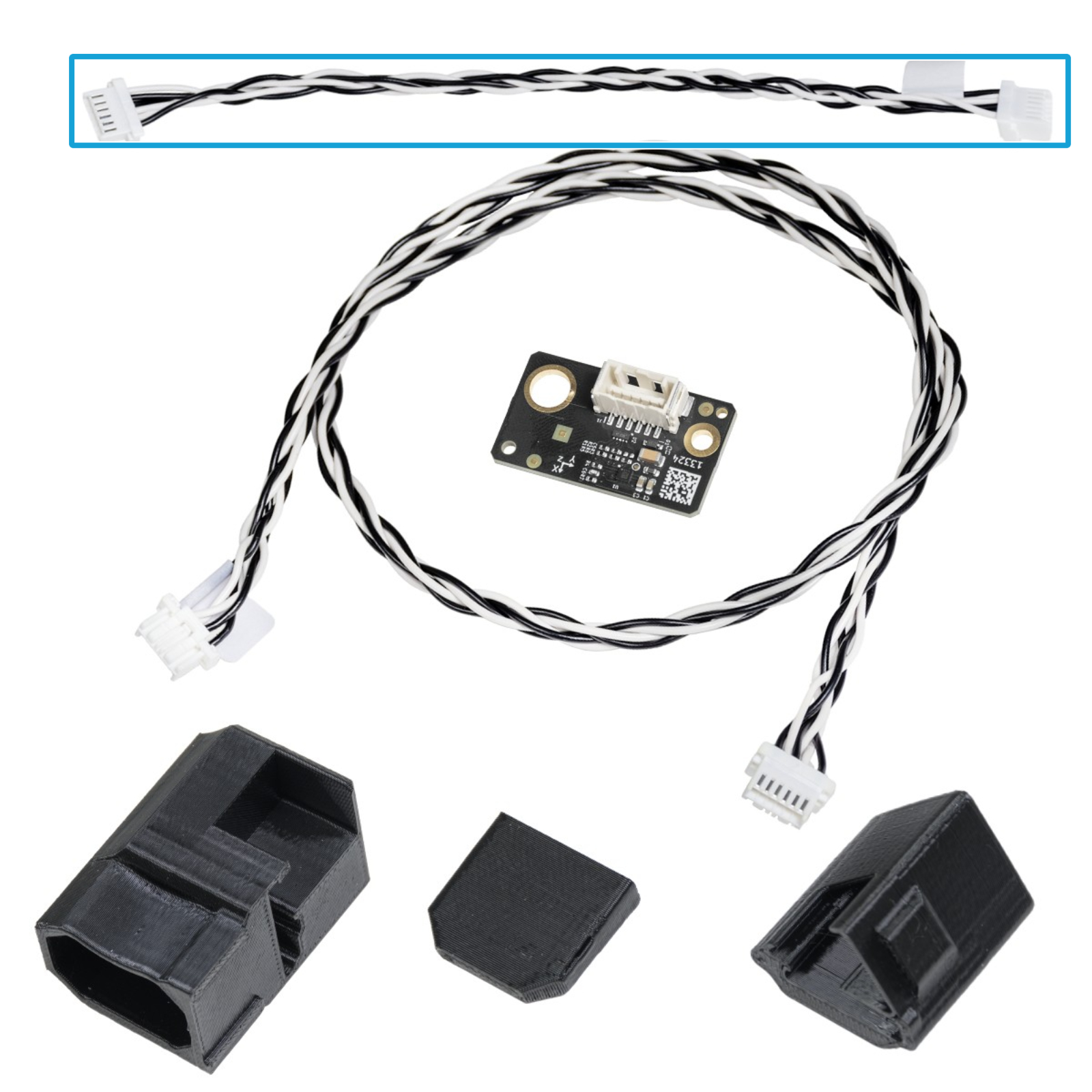 | 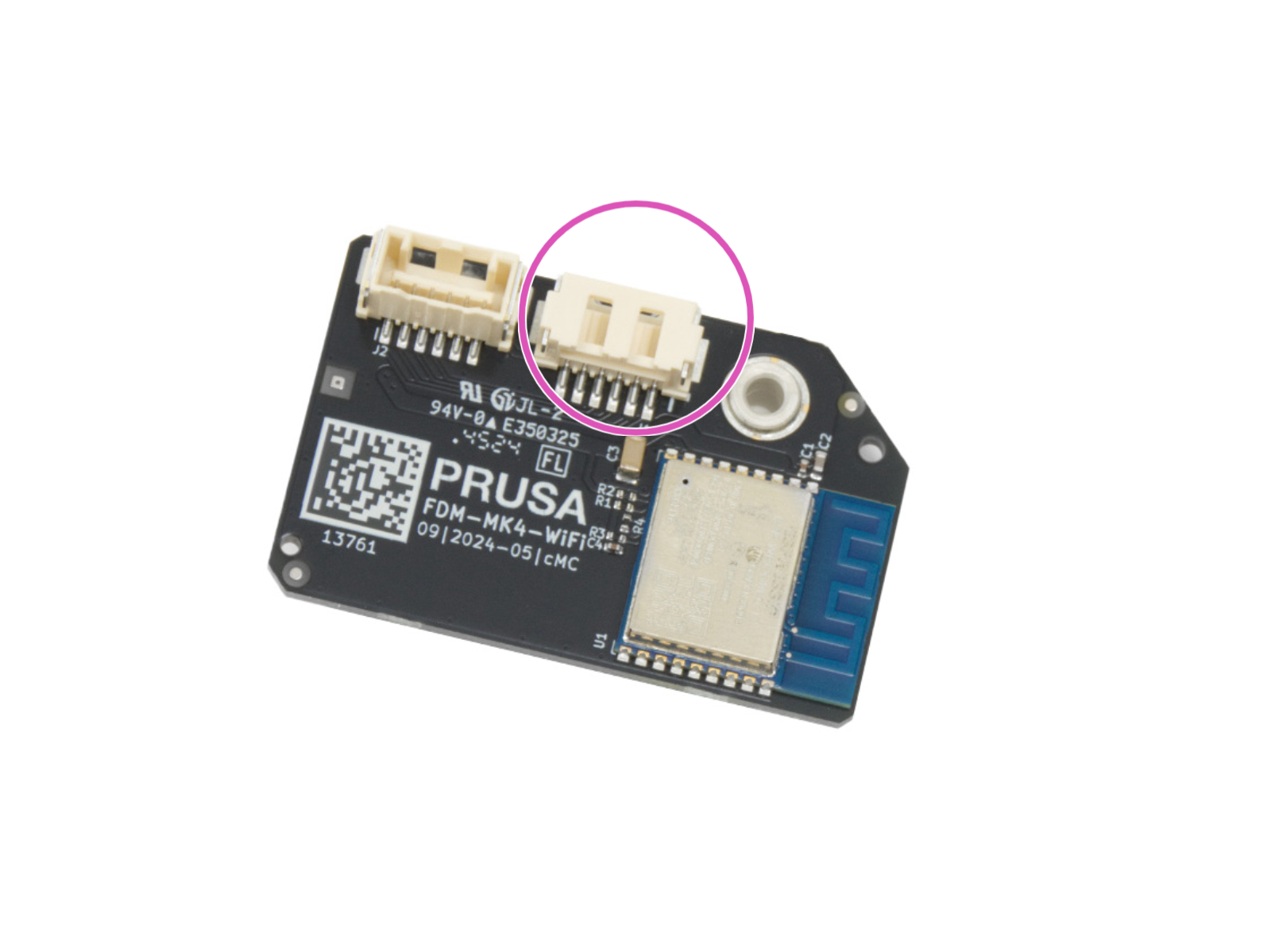 |
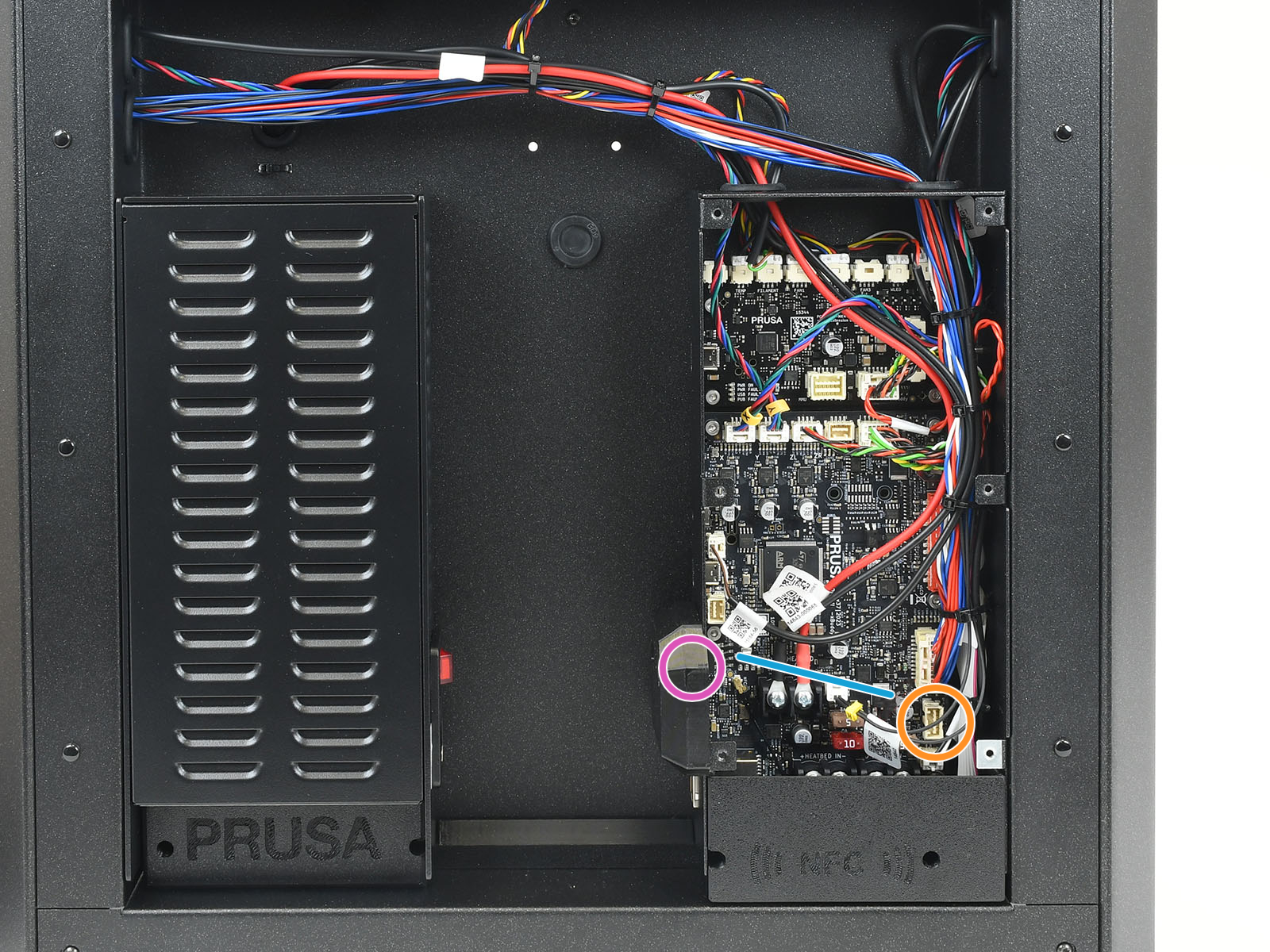
Remove the circular cover on the back. Then, route the accelerometer cable in the hole.
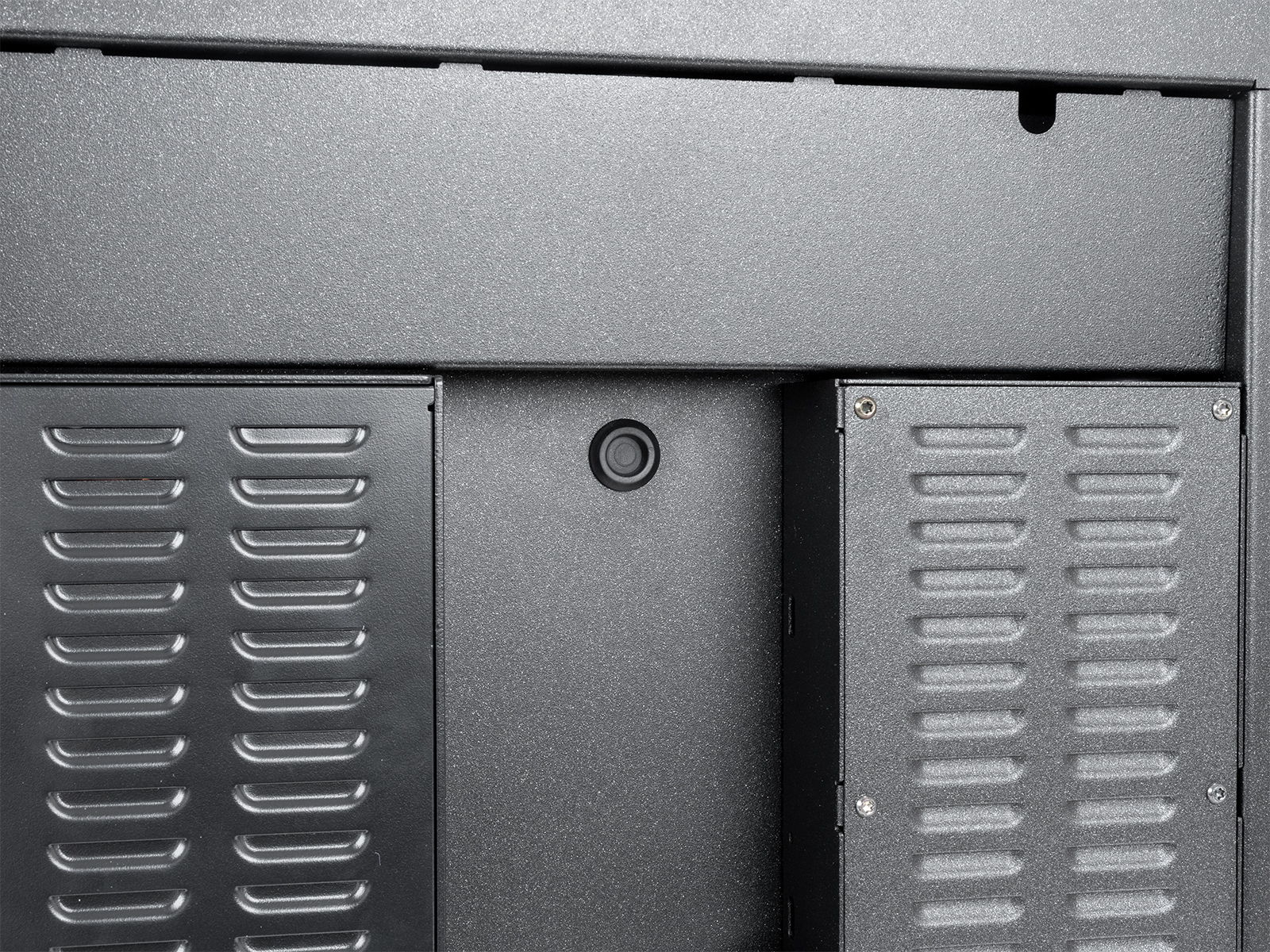 | 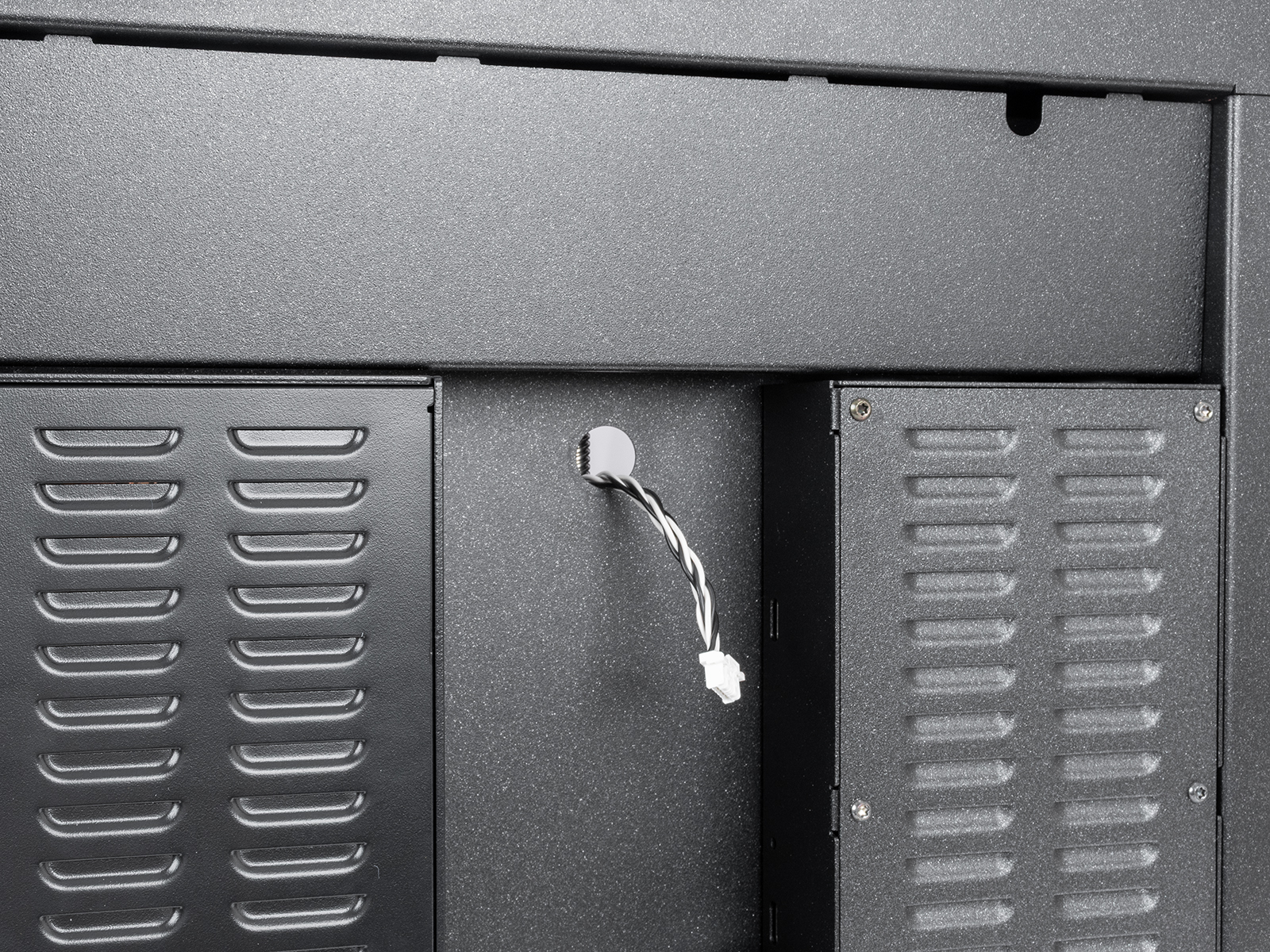 |
Connect the accelerometer cable to the connector at the back of the printer. 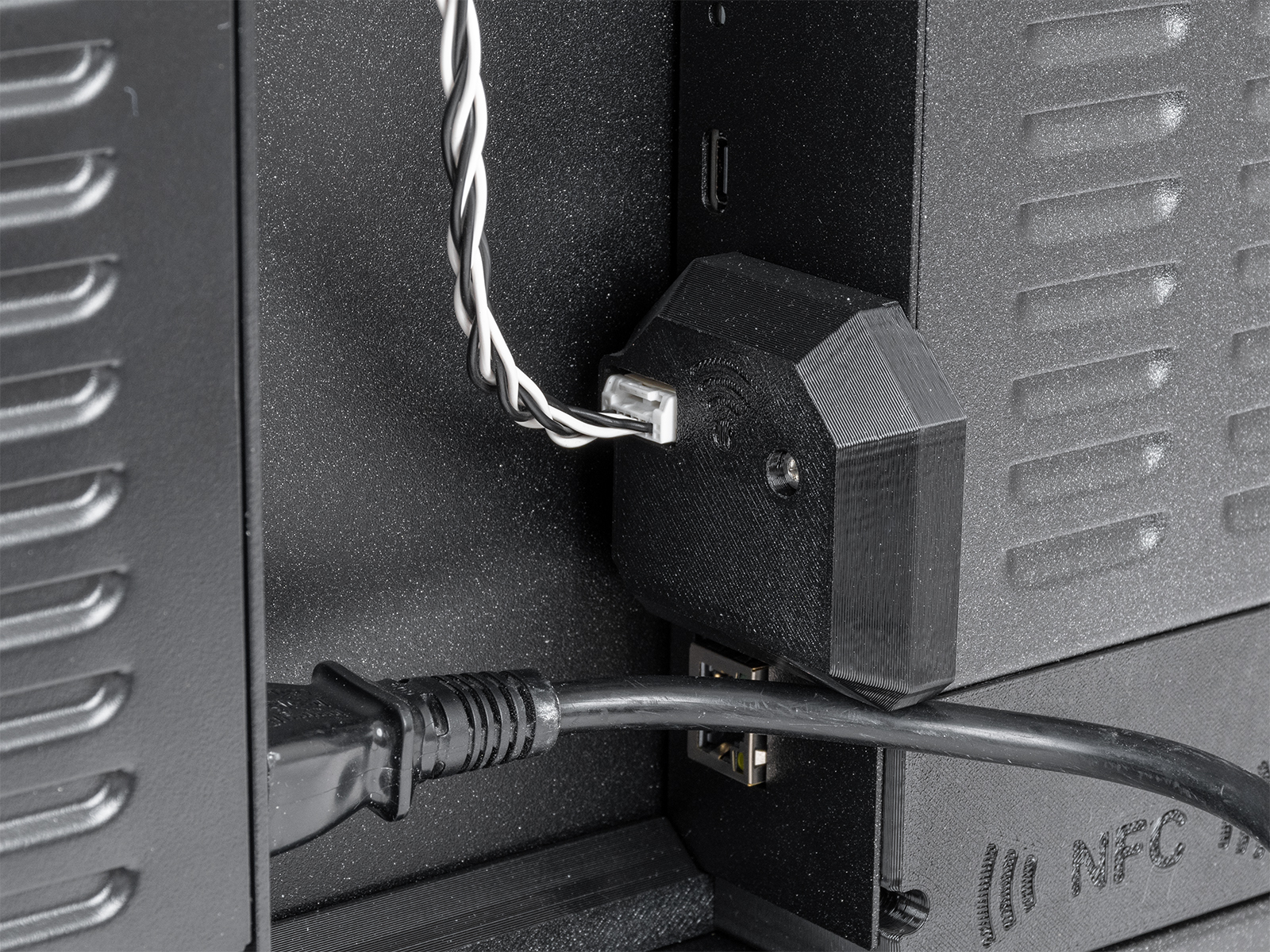
Original Prusa MK4/S, MK3.9/S
On MK4S and MK3.9S, connect the accelerometer to the dedicated port on the xBuddy board.
Alternatively, you can install a short jumper cable between the xBuddy and the Wi-Fi module on the back of the printer. Then, you can connect the accelerometer to the connector on the back of the printer.
On MK4 and MK3.9, connect the cable to the accelerometer's PCB and attach the printed covers. The accelerometer connects directly to the dedicated port on the xBuddy board.
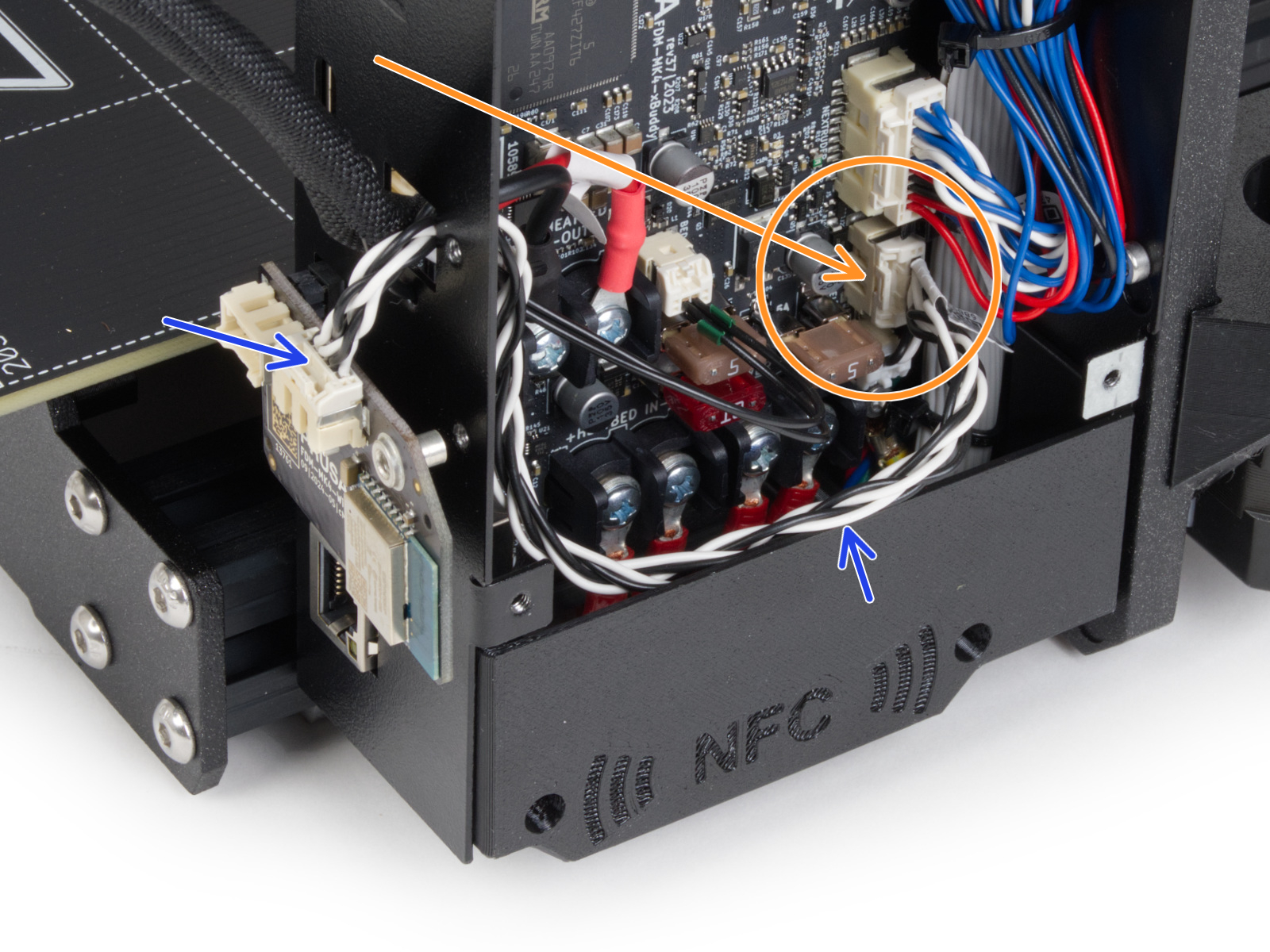 | 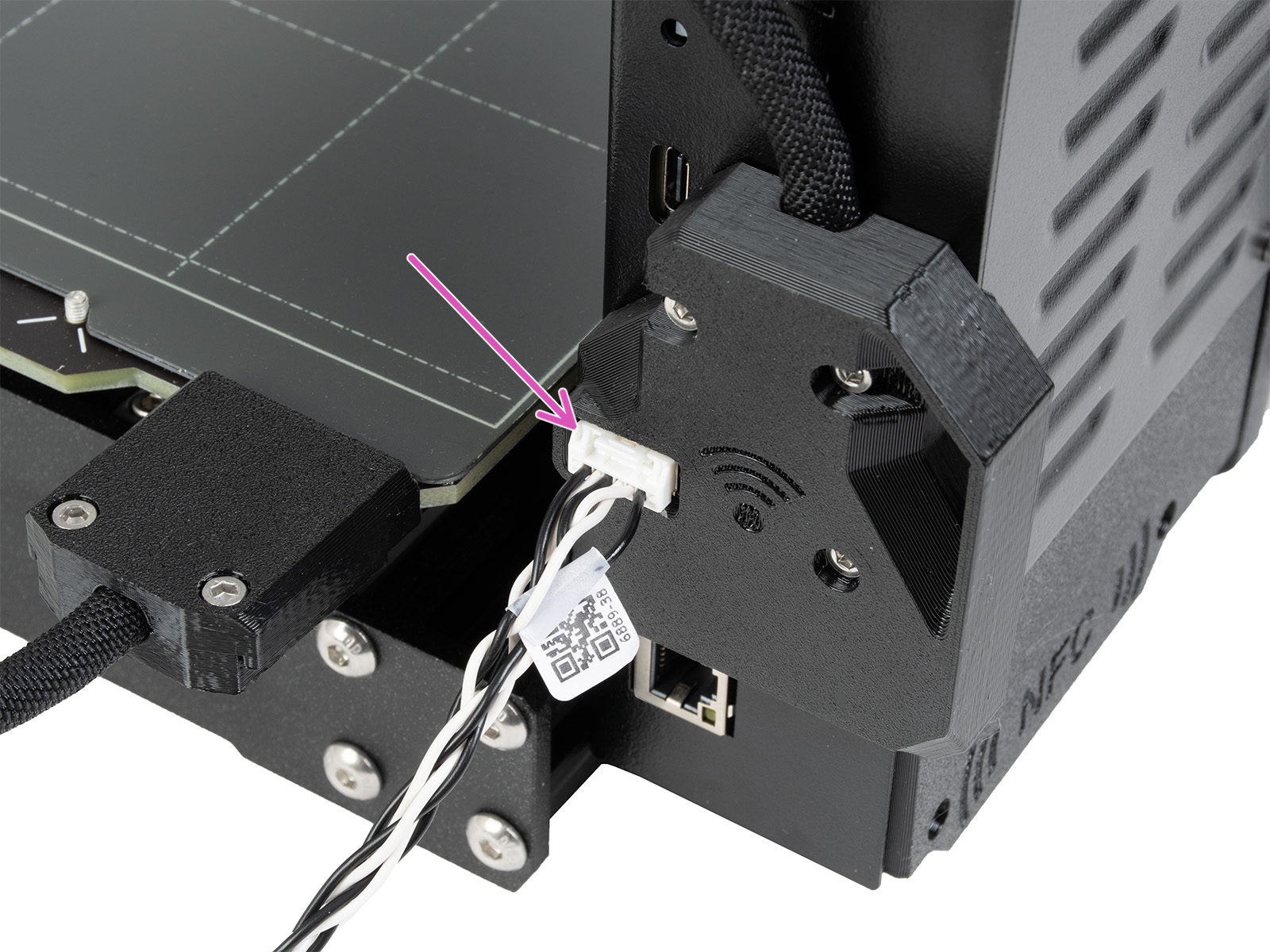 |
Accelerometer connection on MK4S and MK3.9S
Original Prusa MK3.5/S
For MK3.5 or MK3.5S, please visit the dedicated guide.
Calibration
The accelerometer is used to calibrate the input shaper parameters. You can launch the calibration from the LCD Menu -> Settings -> Input Shaper -> Calibration.
X-axis
On MK3.9 or MK4, open the fan-door completely before the procedure. Remove the silicone sock, if installed. Identify the part of the accelerometer that is in the shape of the heater block.
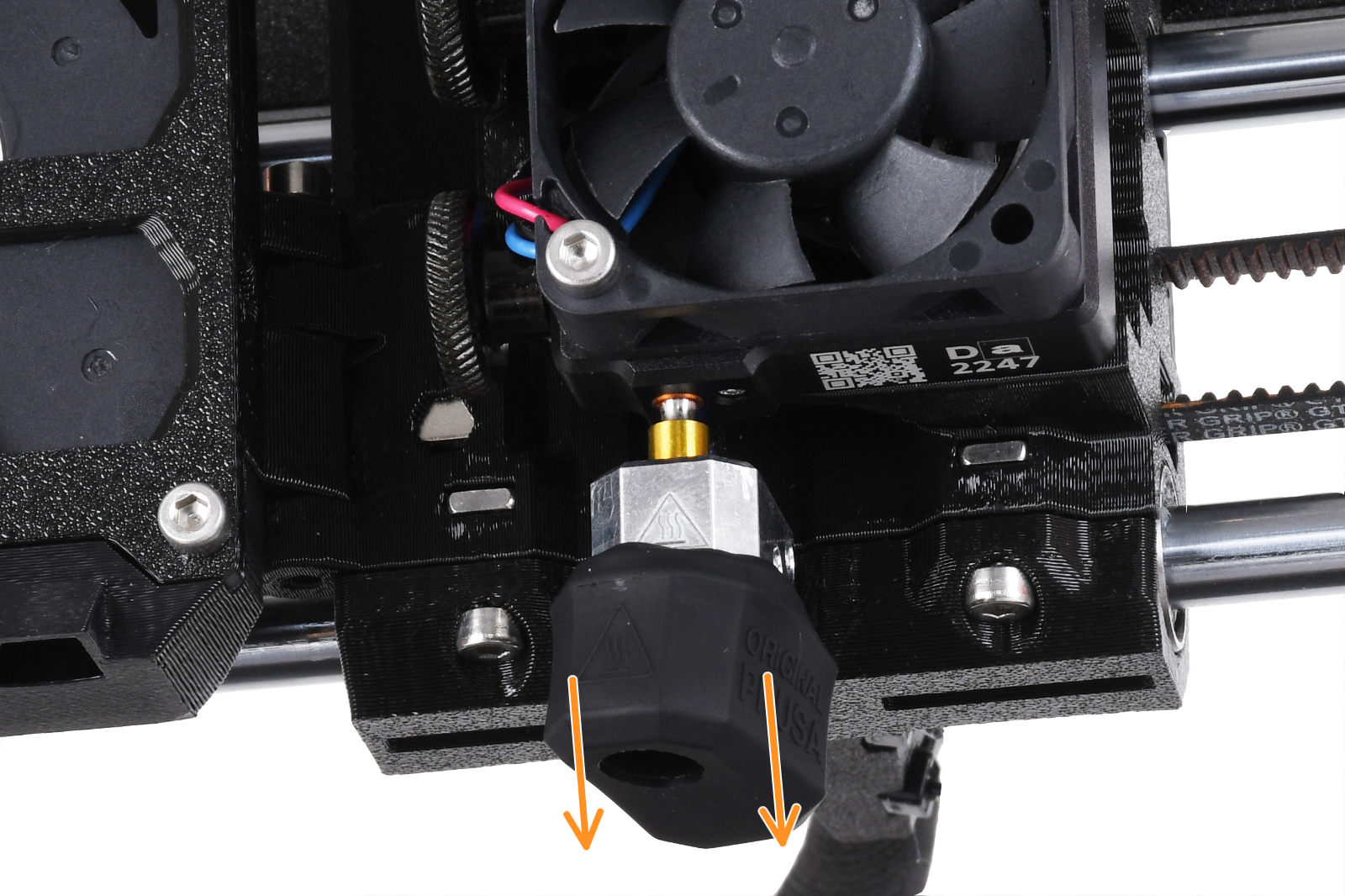 | 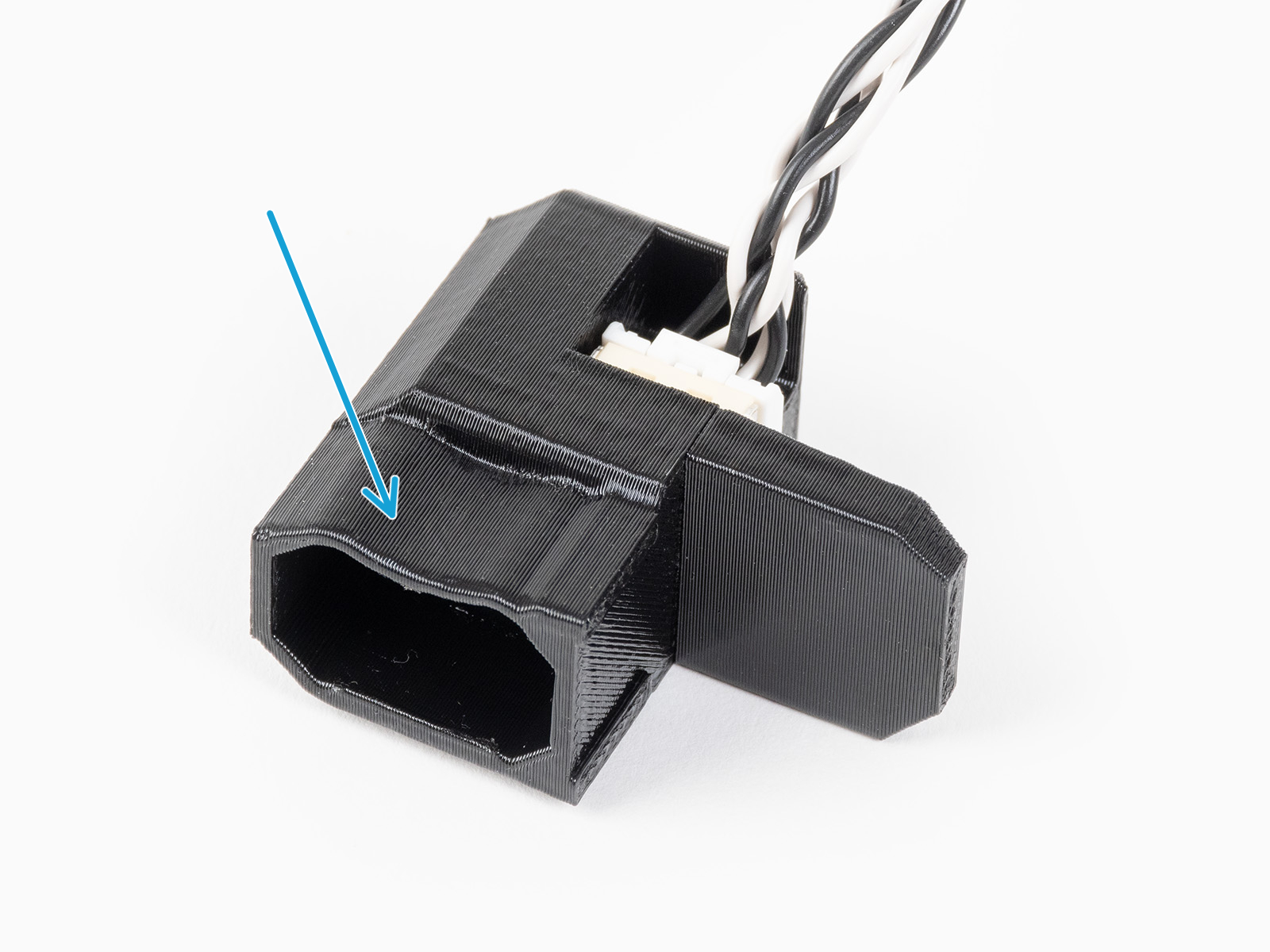 |
Fit the accelerometer to the heater block, by pushing it from the bottom of the hotend. If there is any resistance, do not attempt to push the accelerometer harder, as excessive force might bend the heatbreak.
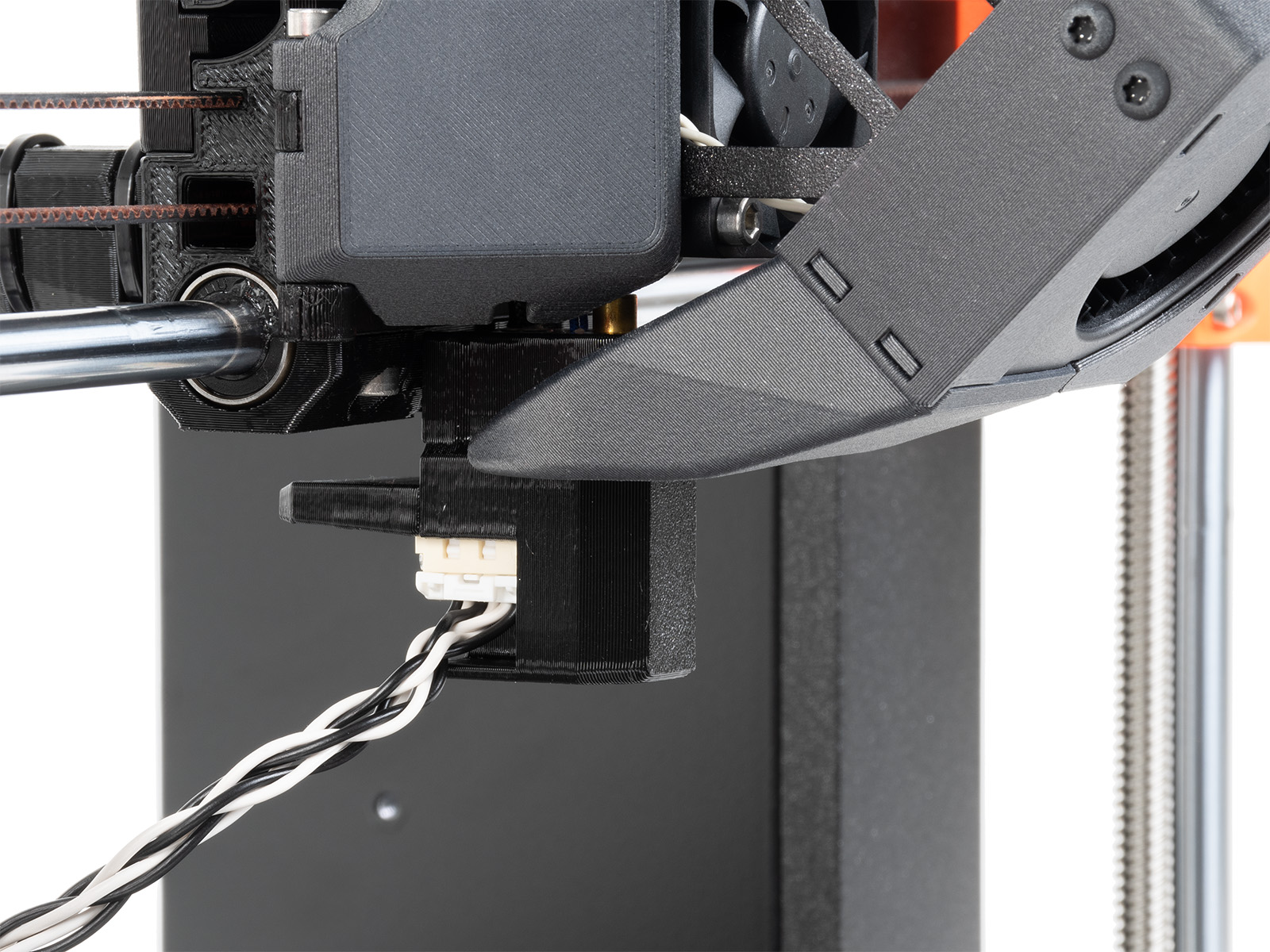 | 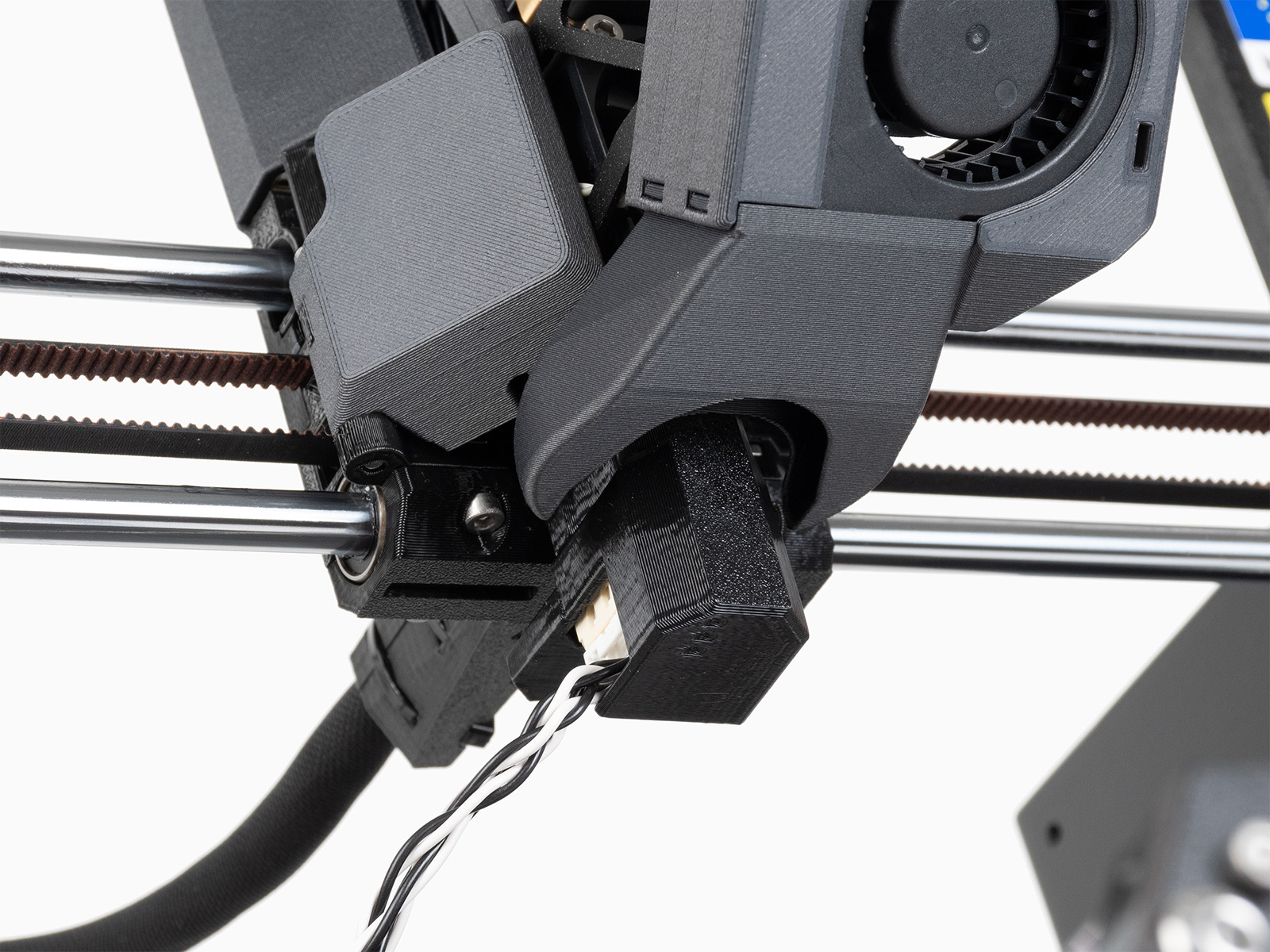 |
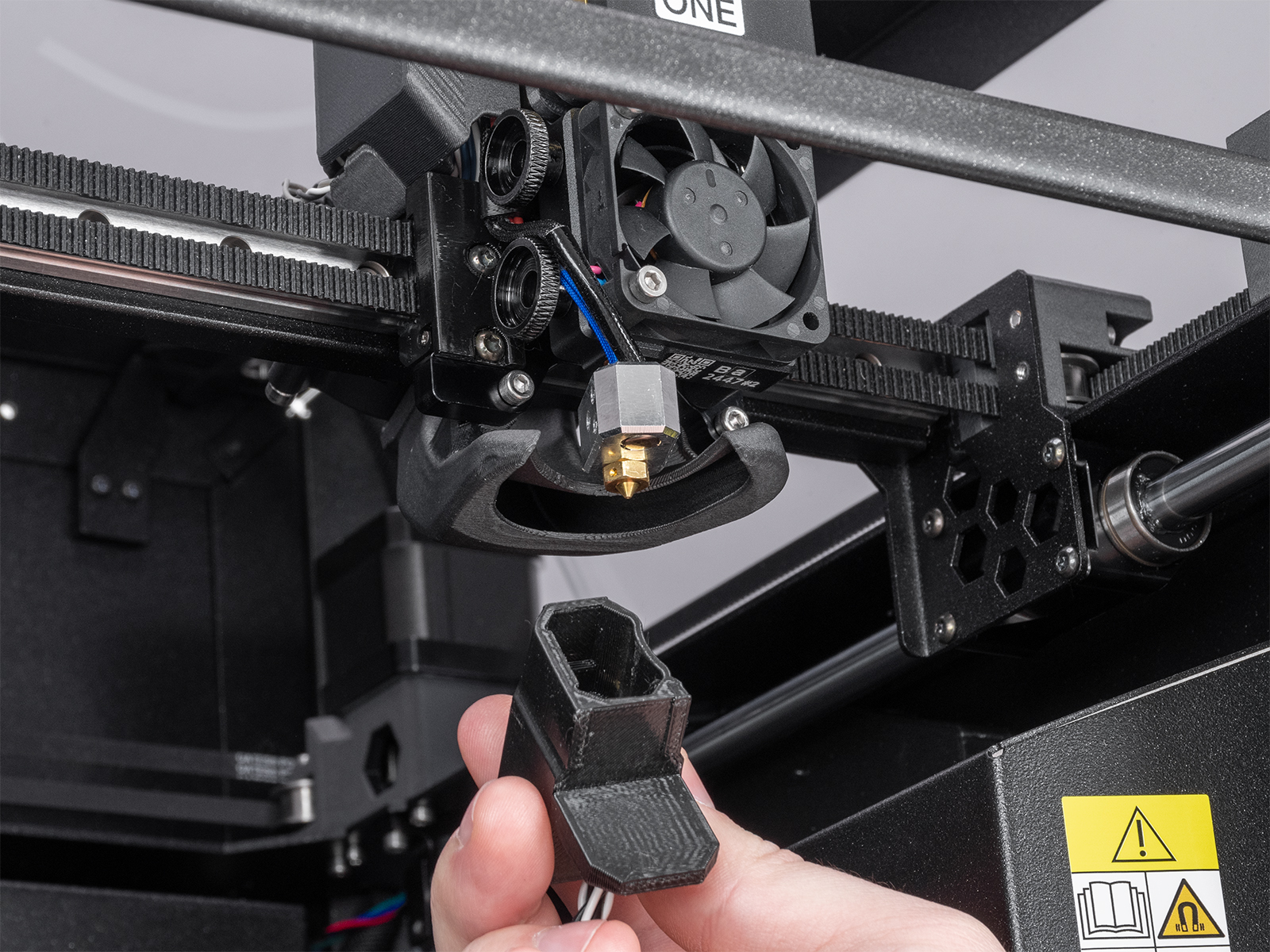 | 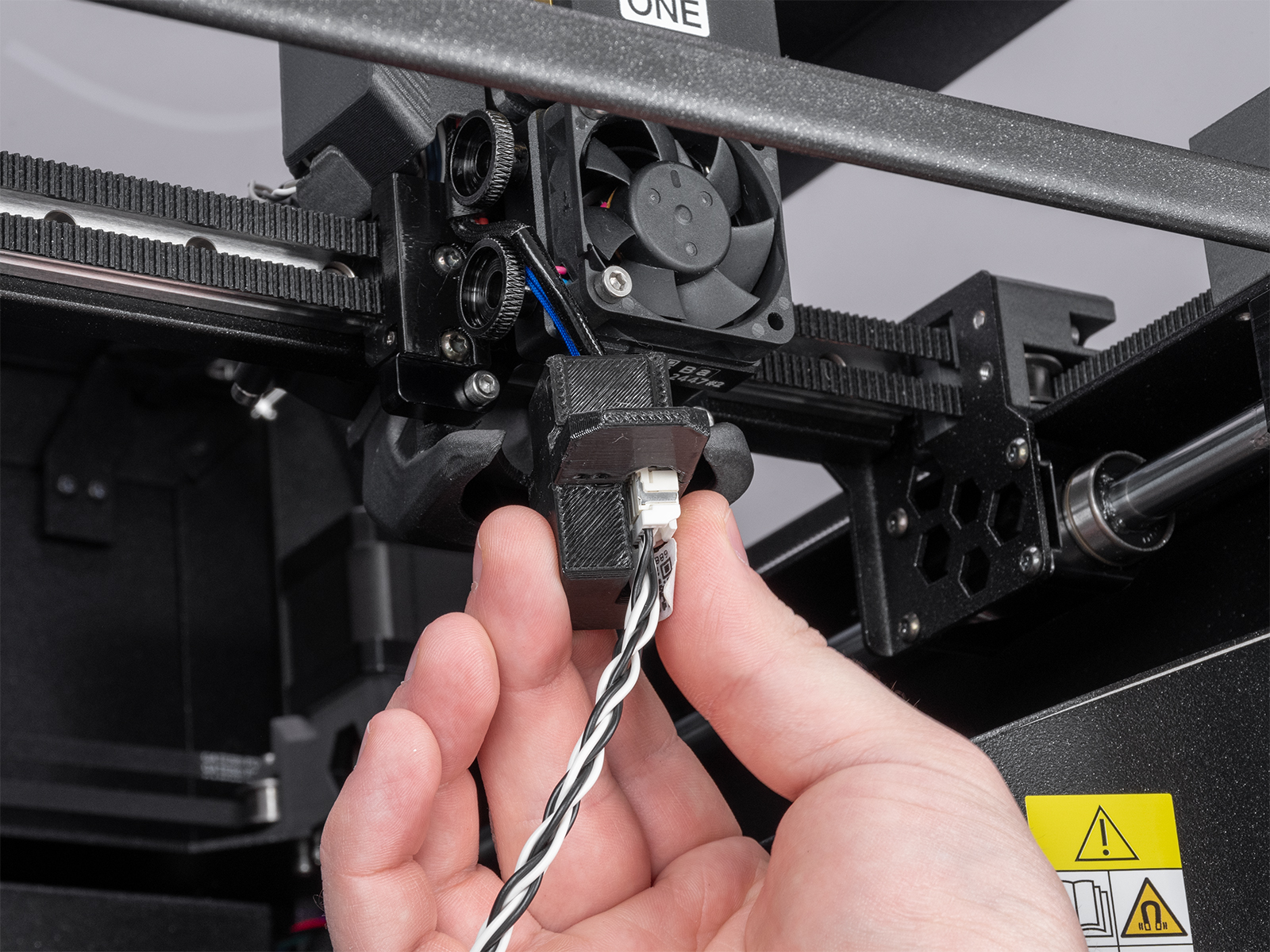 |
Y-axis (MK4/S, MK3.9/S, MK3.5/S)
Identify the part of the accelerometer that protrudes from the rest. On the front side of the Y-axis, place the protrusion between the steel sheet and the heatbed.
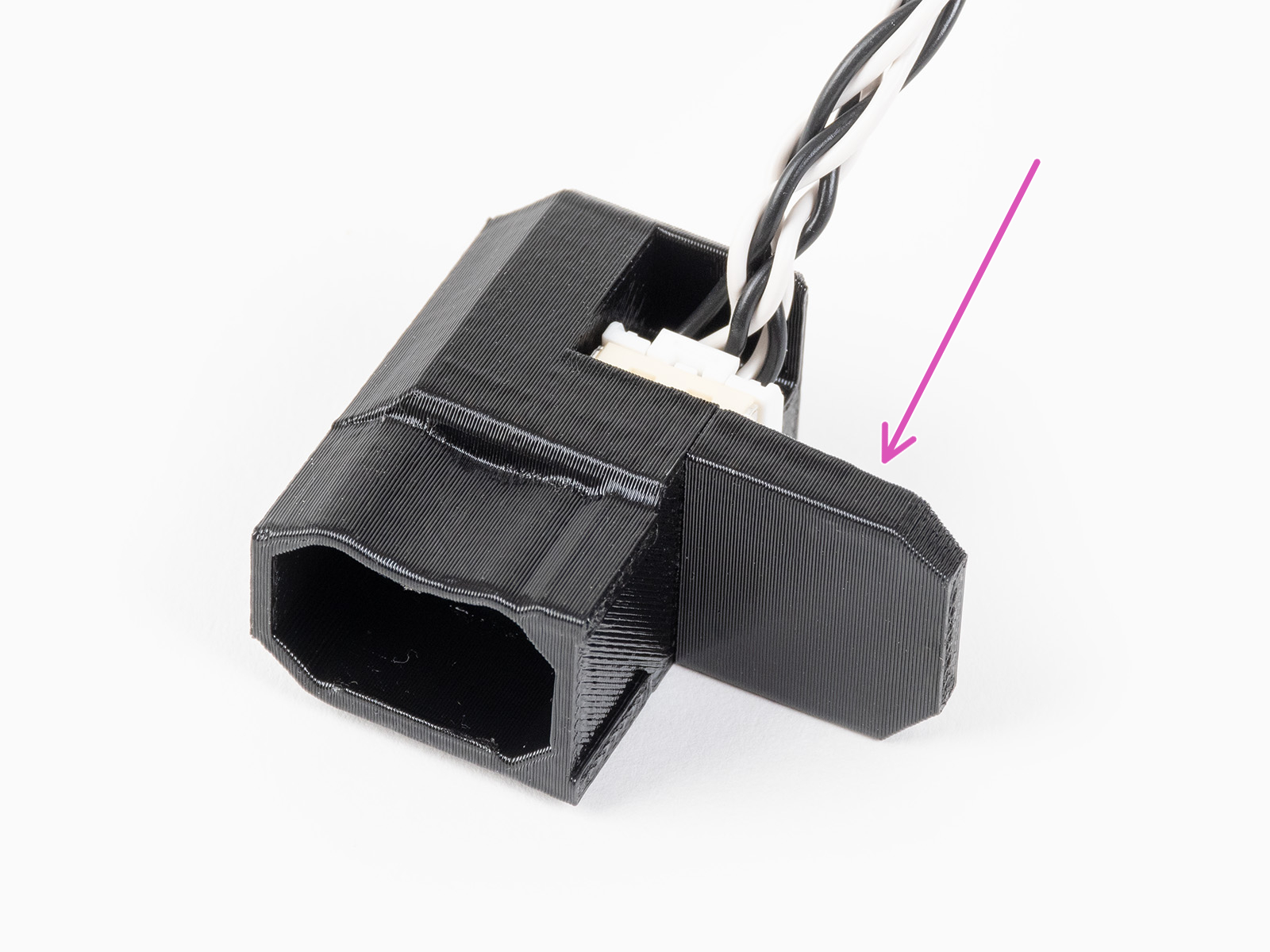 | 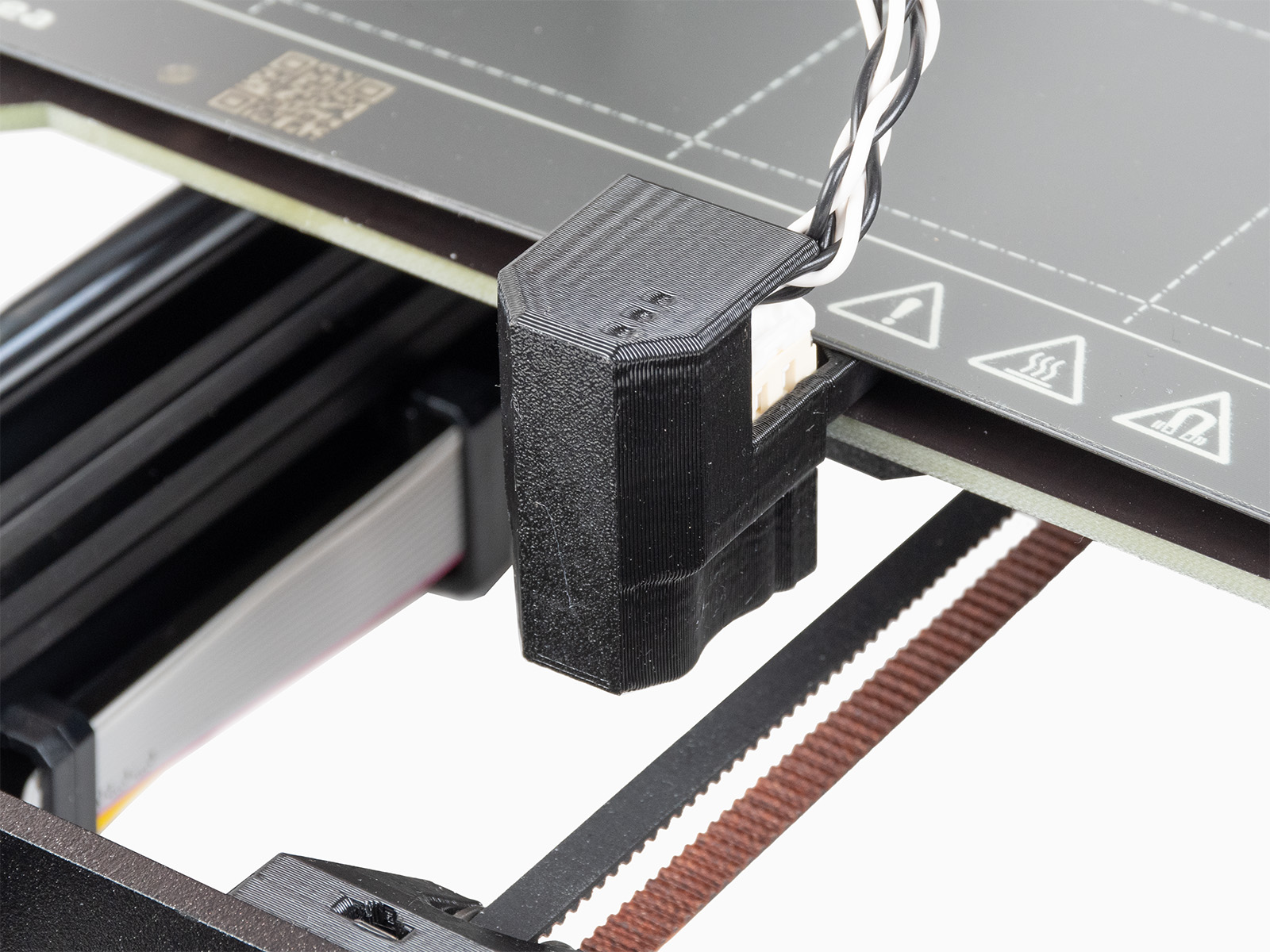 |
Results
The results shown on the printer's display at the end of the calibration indicate the optimal input shaping type and frequency found with the calibration.
42 comments
Now I can't use the accelerometer.
I attempted to plug the cable directly into the main board, but the cable doesn't reach the port on the main board.
If I connect the two cables using the Wi-Fi module as a bridge, it can reach the main board.
On their product page, they advertise, "The Wi-Fi module can be easily unplugged for environments with the highest level of security.
But that doesn't mean "You can calibrate Input Shaper without the Wi-Fi module."
If your environment doesn't allow Wi-Fi, the module may have already been discarded or stored in another location.
I didn't think about the relationship between the Wi-Fi module and the accelerometer. Now I need to find an alternative.
I'm going to solve this problem by connecting the two cables with insulating tape.
https://www.prusa3d.com/product/accelerometer-set/
The input shaper calibration begins right away with homing including the Z axis as part of its "parking" operation, so best not to attach it to the hot end until prompted. At least in FW 6.4.0 RC on a CORE One.
The picture for "Temporarily remove the Wi-Fi board cover" is NOT a CORE One machine.
There is no "jumper cable" in the kit. There are two accelerometer cables, one 180mm and one 600mm. Assumption is to use the 180mm for "Connect the jumper cable between the xBuddy connector and [back of the] the Wi-Fi module connector."
There is no Calibration procedure for a CORE One machine. Somebody posted one in the Comments 3 months ago.
Reading the comments, I see ONE reply from Prusa, and seemingly NO updates.
The kit has two accelerometer-brackets, neither of which is designated for the CORE One.
There is no assembly instructions to put the accelerometer (bare board) into an accelerometer-bracket.
No instruction to attach the 600mm cable to the accelerometer board.